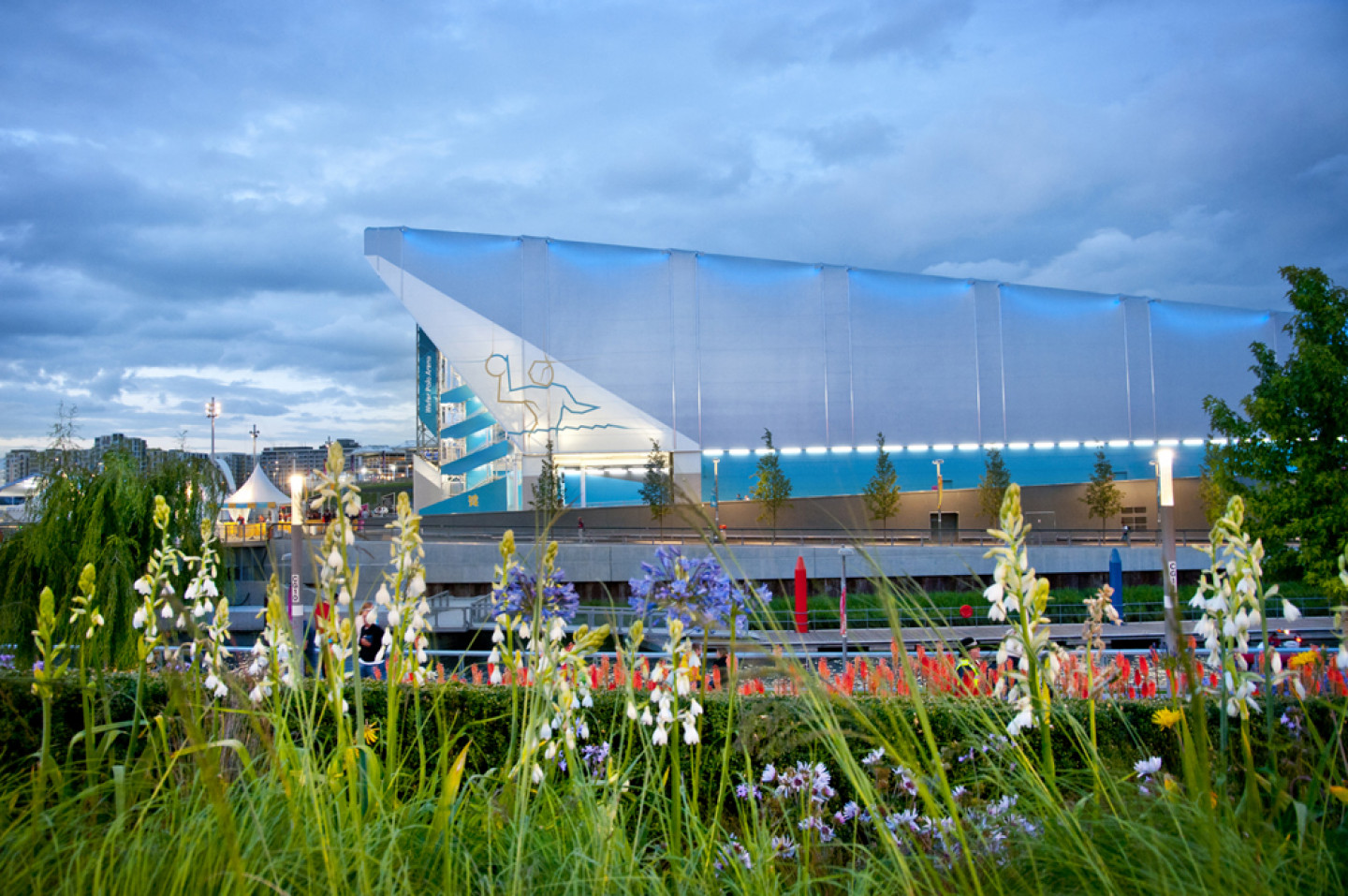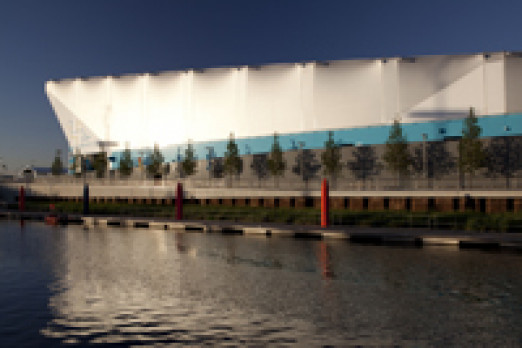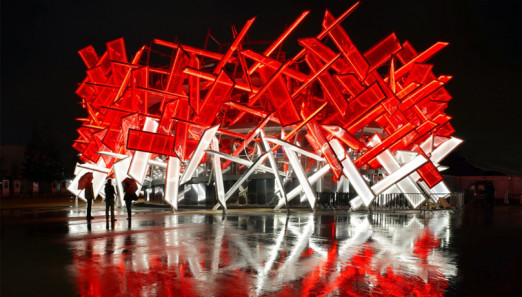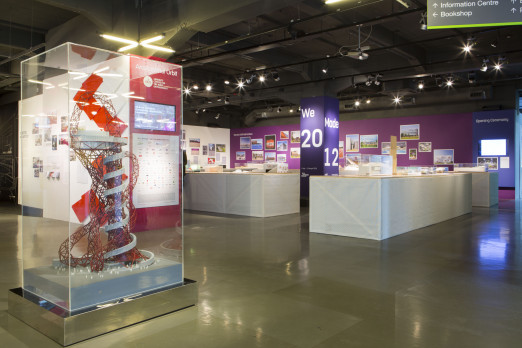The Water Polo Venue sits within a unique development of architecture, infrastructure and landscape with the purpose of providing a platform for the London 2012 games and a lasting legacy for the townscape of London. This demountable venue creates an emerging form of architecture for future Olympic Games. The brief was for an innovative approach to develop a 5,000 seat capacity venue for a single sport, for a single event, which would challenge the design and construction industry to develop solutions that would balance technical excellence in architecture and engineering with value for money.
The Venue includes a competition pool, warm-up pool and ancillary accommodation for spectators, athletes, press and VIPs. It is made from a Kit of Parts where all of the components can be efficiently re-used, re-cycled and indeed many components were pre-cycled taken from the existing supply chain. It occupies a prominent site at the main gateway to the Olympic Park and, with a very limited budget, the design responds through innovations in planning, form and material whilst also complimenting key site views to and from the stadium.
Construction started in early 2010 with a 55 week contract to meet the deadline for overlay and test events in May 2012.
Design
The Water Polo Venue was a demountable structure which occupied a prominent site at the Olympic Park. Built to a very limited budget, the design responded through innovations in planning, form and material whilst also complimenting key site views to and from the stadium.
The concept was driven by the desire to make the building from a Kit of Parts where all of the components could be efficiently re-used and re-cycled. Indeed many components were pre-cycled from the existing supply chain such as the family of modular flat pack trusses which doubled up as lighting gantries, seating stands, modular steel panelled pools, retractable screw piles and retaining walls.
Dual functionality was important in the selection of materials. For example the roof was constructed from 50m long air inflated cushions fabricated from Phthalate-free recycable pvc. The cushions were self-supporting spanning between the lighting gantries and insulated the venue, protecting it from condensation, providing blackout for broadcast, supporting maintenance access whilst providing a legible architectural form and a reflective surface for venue feature lighting.
Services
The mechanical and electrical services design for the Water Polo Arena set new standards for the comfort of players and spectators. This was achieved while minimising energy consumption and using components capable of later reuse in other buildings.
A significant challenge for the services design was how to deliver a single volume, containing three different environmental conditions, with minimal use of plant and building materials. The Field of Play was air-conditioned to meet the strict requirements for the sport; the Olympic Family seating was cooled and heated to maintain controlled comfort; and the General Spectator seating was naturally ventilated.
Each of these zones was separated using air movement alone, achieved by “air blades” that acted as invisible thermal walls. Extensive computer modelling was undertaken to prove the design concepts using Dynamic Thermal Simulations and Computational Fluid Dynamics (CFD), and successfully reduced by 50% the heating, ventilation, and cooling plant required.
The needs of competitive sport and HDTV broadcasting drove the internal lighting design. When water was disturbed during play there was no distracting glare, and light levels remained consistent from all angles. This was done using advanced computer simulations as well as testing the lighting at scale in a bath tub!
Externally, the aim was to avoid the bright and polluting installations commonly associated with large events. Instead, a scheme based on movement and changing colours used the roof as a canvas, reacting to action inside the arena and across the Olympic Park. As a result the Venue gained the same focus and attention but used much less energy.
Providing sufficient reverberation control without dampening the crowd atmosphere was a critical aspect of the acoustic design. Micro-perforated fabric liners on the side walls ensured that announcements were clearly audible during the excitement of play. Use of acoustic software made it possible to assess public address system coverage and intelligibility.



